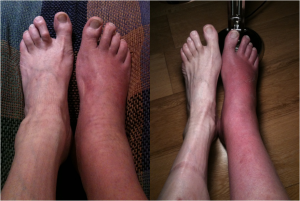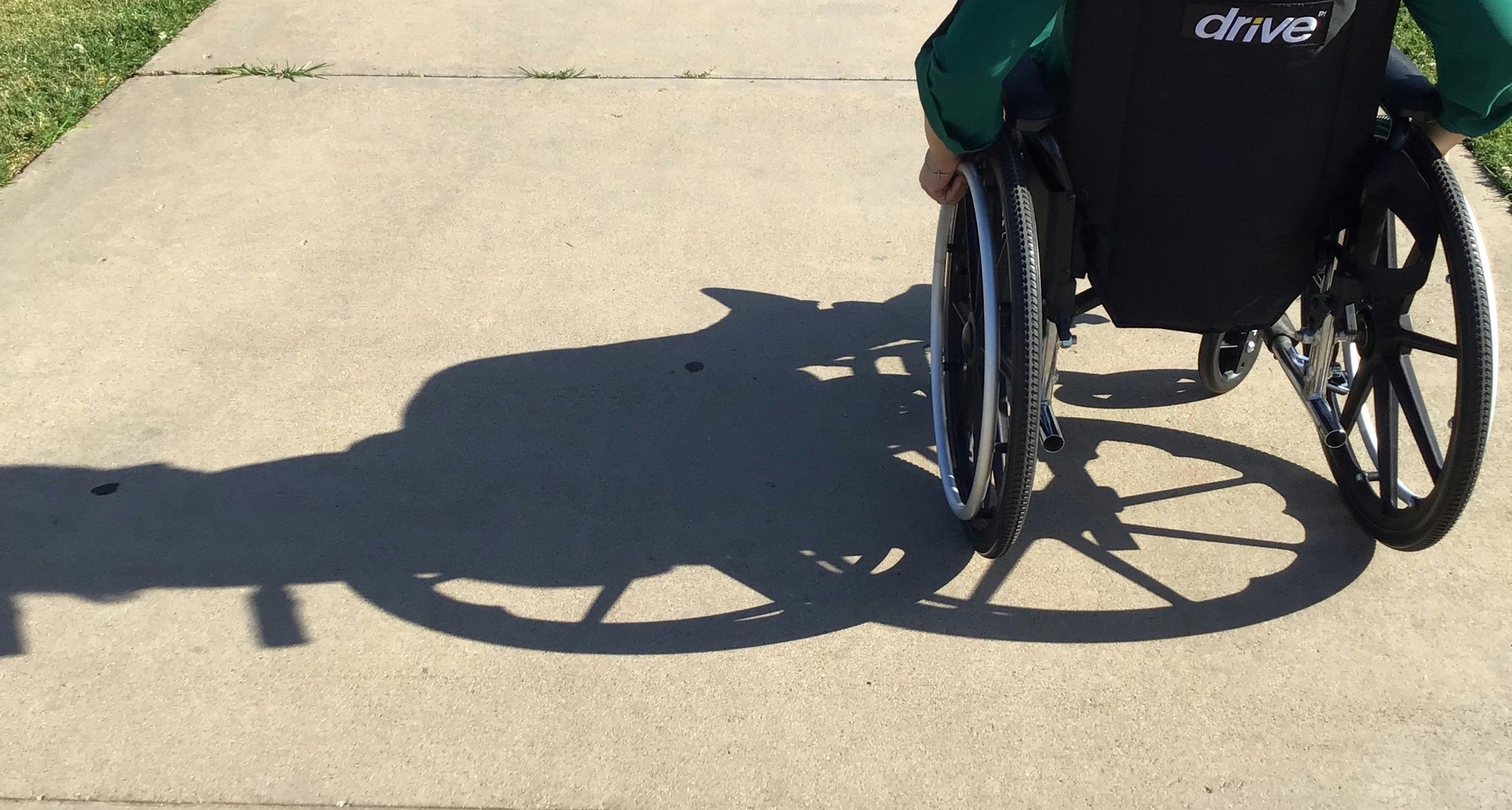

Living with CRPS and Bone Marrow Oedema
Neal’s journey started in 2012, and led to a diagnosis of Complex Regional Pain Syndrome and Bone Marrow Oedema. Through his journey he has found ways to make his life easier, including being prepared to meet healthcare professionals who have never heard of the condition.
I woke up one night at about 1:00 in the morning in absolute agony; it felt like someone was trying to hammer a 6 inch nail through my right foot. From that moment my life was instantly turned upside down and ever since then I have become a part time wheelchair user.
In the beginning
It all started back in 2012 when I was told that I might have gout and arthritis in my right foot. Finally after 3 years of x-rays, blood tests, emergency visits to A&E and 2 MRI scans, it was confirmed that I had Complex Regional Pain Syndrome (CRPS) and bone marrow oedema, with hairline fractures in my right foot.
Apparently 3 years is not an unusual time scale for getting a CRPS diagnosis. At the time of my diagnosis in early 2016 none of the doctors and A&E staff that I met (and there have been plenty of them) had ever heard of CRPS. Doctors at A&E apologised saying ‘Sorry I have never heard of your illness can you tell me anything about it’.
I now have a page of printed notes that I take with me to A&E to give to the doctors – they all say that it is really helpful. Only the rheumatology consultants at the main hospital seemed to know about CRPS, though finally in 2023 one of the new doctors at my GP surgery had actually heard of CRPS, though he had never seen a case.
Treatment
My initial treatment involved an intravenous course of a drug commonly given to people with breast and other cancers in order to help with / strengthen bones. Initially my condition improved slightly and I was out of my wheelchair for a while and getting about on crutches and a walking stick. My treatment then involved 4 months of physiotherapy at my local hospital with exercises for my feet and legs but I had to stop that treatment because in my case it was doing me more harm than good and not improving my situation. At that time back in 2016 the physiotherapy department had not even heard of CRPS, however I think by now, in 2024, awareness about CRPS has slightly improved in the NHS.
Life with CRPS
Over the last 8 years my CRPS has impacted various parts of my body resulting in muscles wasting and continuing loss of bone density leading to Osteoporosis as identified in bone scans at hospital. My condition has now deteriorated to the point where I can no longer use crutches because my wrists are too weak to support my light weight. I am over 6 foot tall, and weigh only 57kg. My weakened wrists and muscles mean that I no longer have the strength to self propel myself in my old manual wheelchair, so I had to upgrade a few years ago to an electric powered chair and have a crane / hoist fitted in the boot of my car so I can lift the power wheelchair out of my car. I now also have a set of portable extendable wheelchair ramps in order for me to get in and out of the front and back door of my house.
One thing I have learnt with my deteriorating physical condition is to keep myself educated and aware of the latest improvements and products designed for disabled people. Acquiring and upgrading certain disability products has certainly helped me make the best of a bad situation.

A piece of advice
Another piece of advice I can give someone with a rare condition who might end up in an Accident and Emergency department, or someone who sees new healthcare professionals fairly frequently due to their condition, is to prepare a brief note/ letter that explains your condition. Some things you could include are:
- Confirmed diagnosis (name of illness or illnesses).
- List of tests (e.g. X-Rays in 2015, 2 MRI scans in 2016, CT scan and Colonoscopy in 2015, Bone Density scans etc.)
- List of all medication (including dosage and frequency).
- Allergy information (e.g. NOT ALLOWED NSAIDS, ASPRIN etc due to risk of internal bleeding also ALLERGIC to certain statins).
- Usual permitted hospital pain relief.
- Name of hospital/s you usually attend and your hospital patient number/s
- Your Doctor / GPs details.
- Your NHS number.
- Your name, date of birth, home telephone / mobile number, email and home address.
- Next of Kin details.
- A short explanation in 1 or 2 sentences that will explain what your rare condition is to the doctor, nurse or ambulance crew that have never even heard of it.
I understand that in certain circumstances some hospitals are happy to look at medical records that a patient might provide to them on a USB computer stick as opposed to printed paperwork though I don’t know how common that is in the UK.
I hope some of the above information might help some people and I wish you all good luck with your rare medical condition.
Neal.
